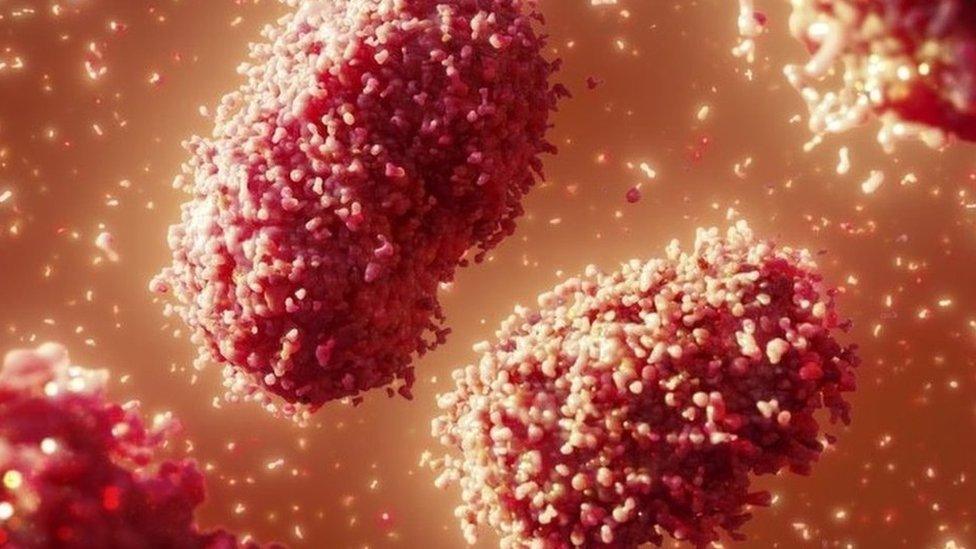Got a new rash? Monkeypox or something else?
- Published
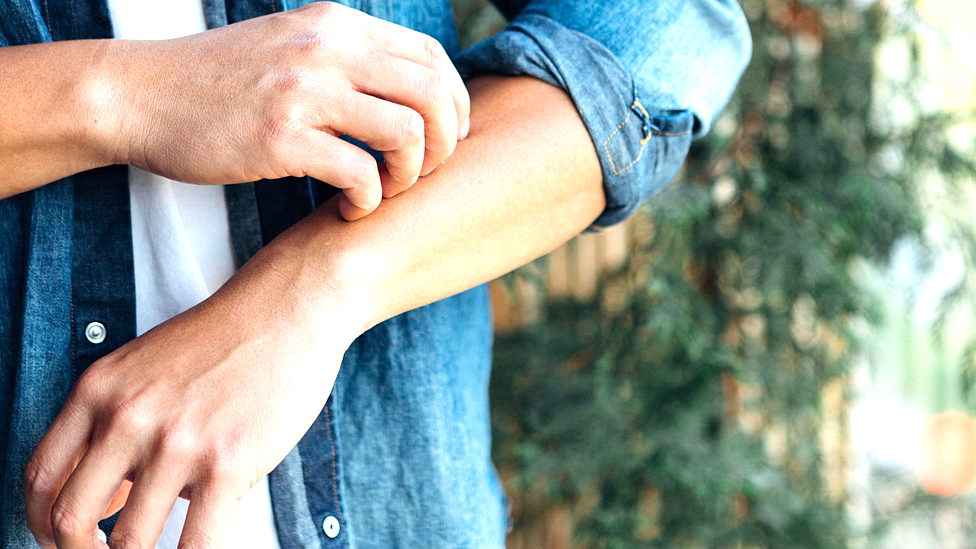
A rash can be caused by lots of things, including - but very rarely - monkeypox virus.
What are the things you should check and consider?
Could it really be monkeypox?
The first thing to ask yourself is - do you think you could have been exposed? It takes close, prolonged contact - often skin-to-skin - with an infected person. There are very few people in the world who currently have it, meaning there are not that many opportunities to catch it.
Even in remote parts of some African countries where it can sometimes circulate, children rarely contract it.
If you were to get sick with monkeypox, the first thing you would notice is flu-like symptoms - feeling tired, generally unwell and feverish. It's what doctors call the "invasion period" of the disease, when the virus enters your cells.
Your glands would feel swollen because your immune system is ramping up to fight the infection.
Next comes the rash, which goes through different "skin eruption" phases. It starts off flat and red, but then gets bumpy and blistered, before forming scabs.
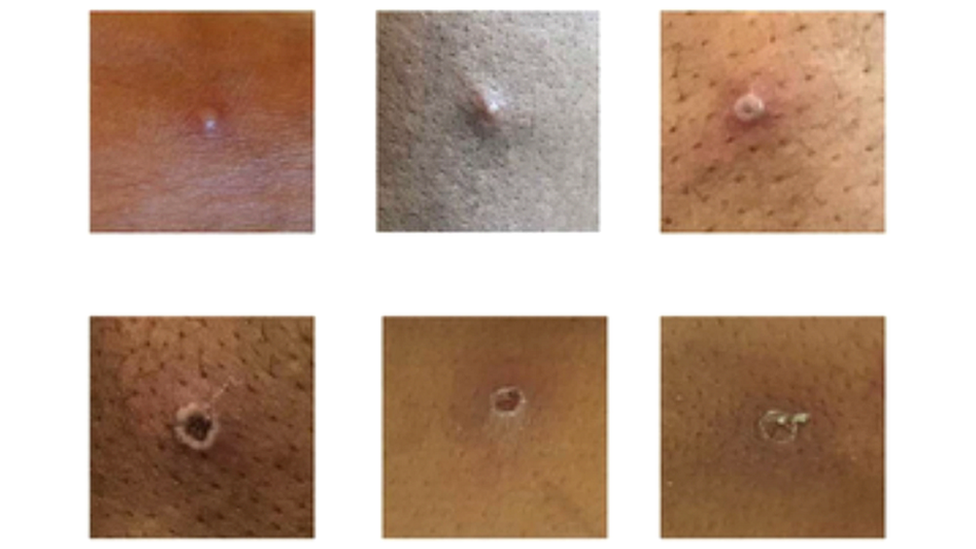
The rash changes and goes through different stages, and can look like chickenpox or syphilis, before finally forming a scab, which later falls off
Dr Rosamund Lewis from the World Health Organization's Emergencies Programme explains: "It starts with what we call macules. These are just red areas. Then it progresses to papules. This is something you can feel. It's raised."
Those red lumps and bumps then start to blister, and fill with a whitish fluid that looks like pus.
These pustules then begin to dry out and scab over. Eventually, the scabs will heal and drop off.
"This is why it can be confused with chickenpox," says Dr Lewis.
A monkeypox rash usually starts on the face - sometimes in the mouth too - and then the arms and legs, hands and feet, as well as the trunk of the body.
In some of the recent cases, the rash has often been around the genital area. Dr Lewis says: "The rash may not be visible because it may be covered."
The rash - which may look slightly different on different skin tones - can contaminate bedsheets and clothes.
The advice from the UK Health Security Agency is to be aware of any unusual skin changes or lesions, especially around the genitals, and for people to contact NHS 111 or a sexual health service if they have any concerns.
Dr Tanya Bleiker, President of the British Association of Dermatologists says: "Differentiating between different types of rashes can be difficult. So if in doubt, follow the advice and get it checked."

James Gallagher explains what it is and if we should be worried.

What else might a rash be?
There are many possibilities, but some common ones include:
Chickenpox
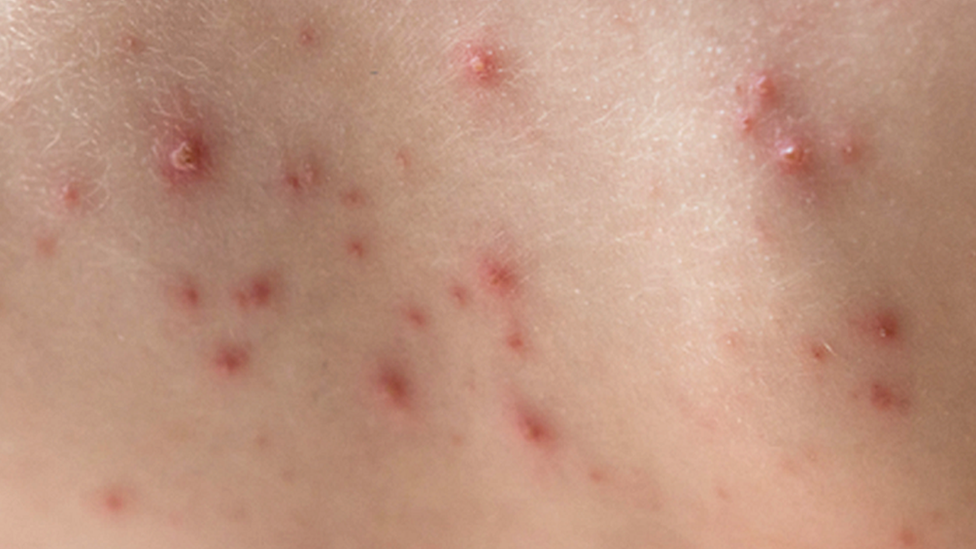
This rash is usually very itchy and goes through similar stages, ending with scabs. It is possible to get chickenpox more than once in your life - adults can get it again, even if they had it as a young child. Shingles - reactivation of the chickenpox virus - also causes a rash. It can appear in blotches, and is usually painful.

Scabies
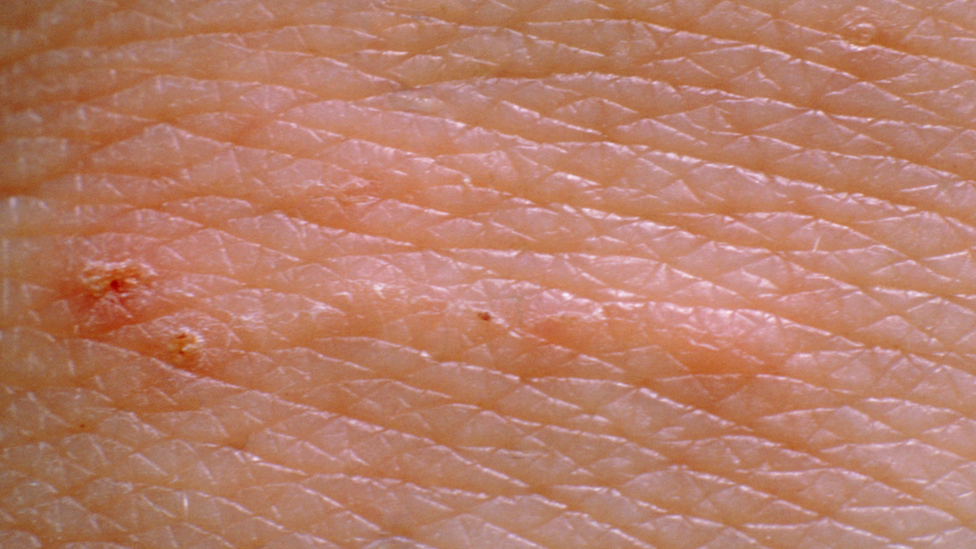
Scabies is caused by mites that lay eggs in the skin, which make it very itchy and red. The rash can appear anywhere on the body, but often starts between the fingers. You might notice lines or tracks on the skin as well as dots. While it is not serious, it is very contagious and needs treating.

Bedbugs or insect bites
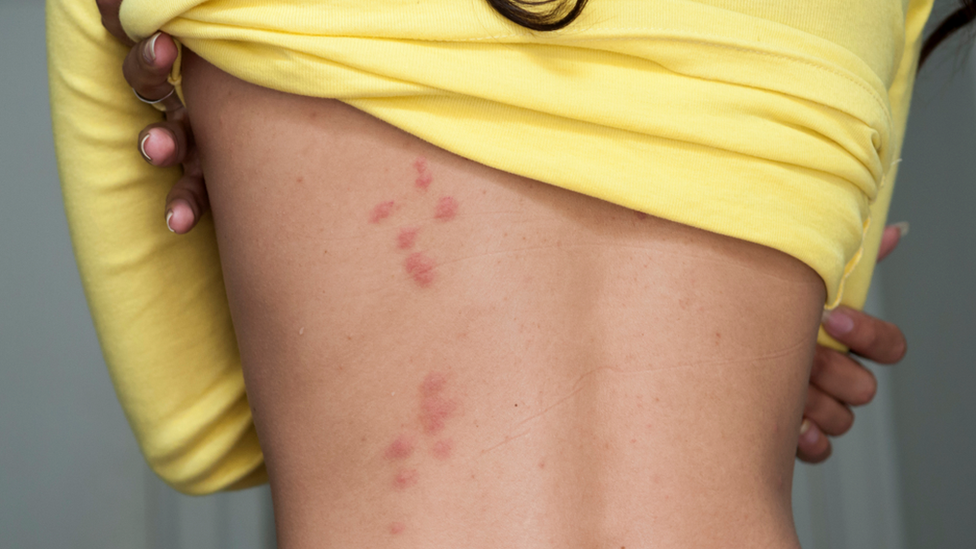
You can get bitten by bedbugs if the bedding or mattress that you are sleeping on is infested with them. The bugs themselves are tiny, so you may not notice them. Like other insect bites, the lesions are itchy and red, and are often grouped in a line or cluster.

A sexually transmitted infection (STI) like syphilis or genital herpes
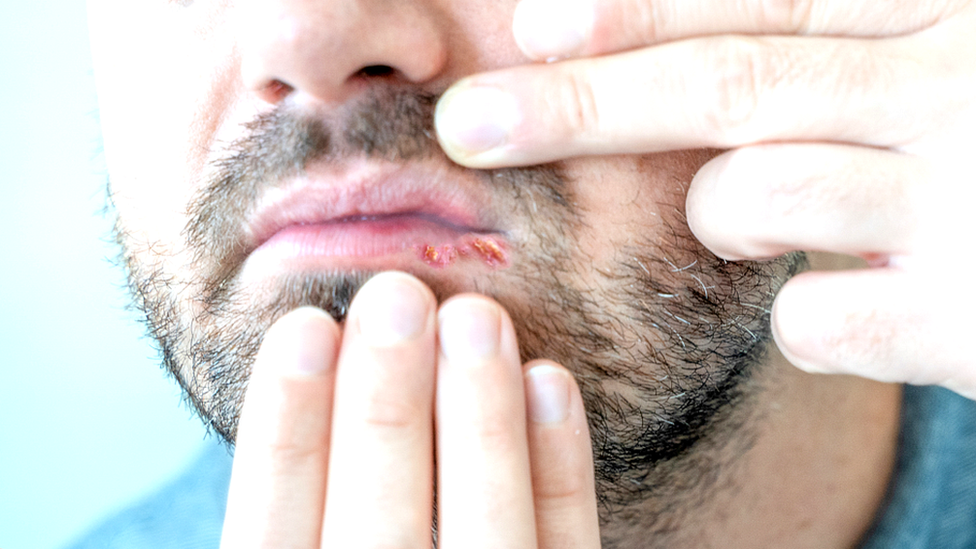
Herpes can cause sores on the mouth too
Syphilis is a bacterial infection that is usually caught by having sex with someone who is infected, and genital herpes is a virus that can be sexually transmitted. Both can cause blisters. It's important to get tested and treated as soon as possible, if you think you might have an STI.

Hives/allergy/urticaria

This itchy, stinging, red rash is a skin reaction to something that the body thinks is a threat and reacts to. Sometimes the trigger is never found, but common ones include eating certain foods or contact with certain plants, chemicals or medicines.

Molluscum
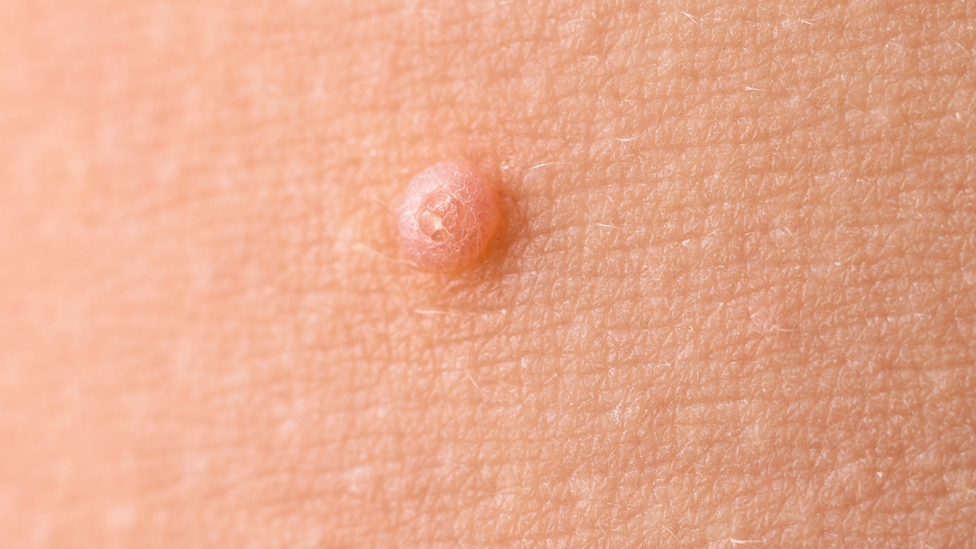
This common viral infection, often seen in children, is harmless but can spread around the body, causing itchy, firm, raised spots that have a small dimple in the middle. Clusters of them tend to occur in the armpit, behind the knees or in the groin. You can catch it from skin-to-skin contact or by touching contaminated objects, such as towels.

Hand, foot and mouth disease
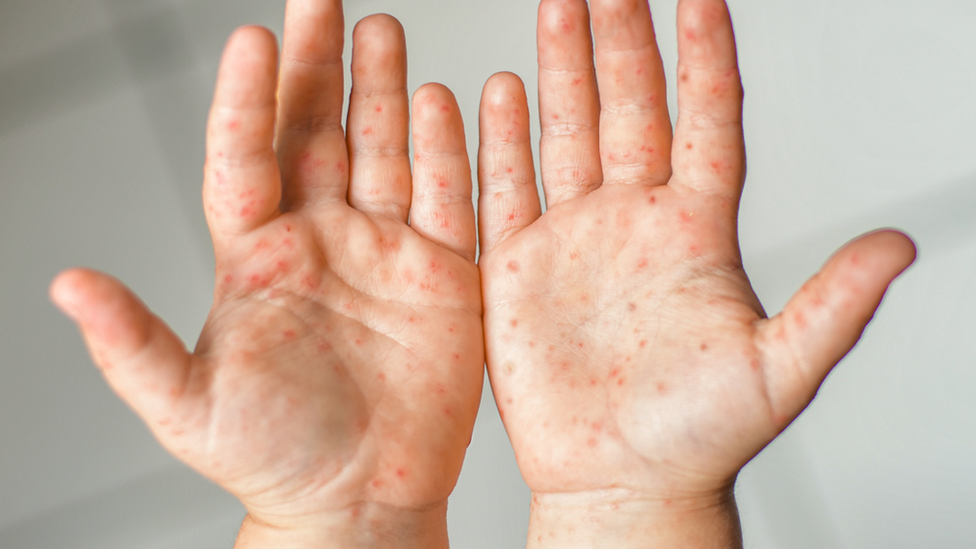
This viral infection is spread by coughs and sneezes, as well as contaminated household items such as cutlery. It can cause flu-like symptoms, as well as sores in the mouth and a red rash on the palms and soles of the feet. It usually gets better on its own.

Impetigo
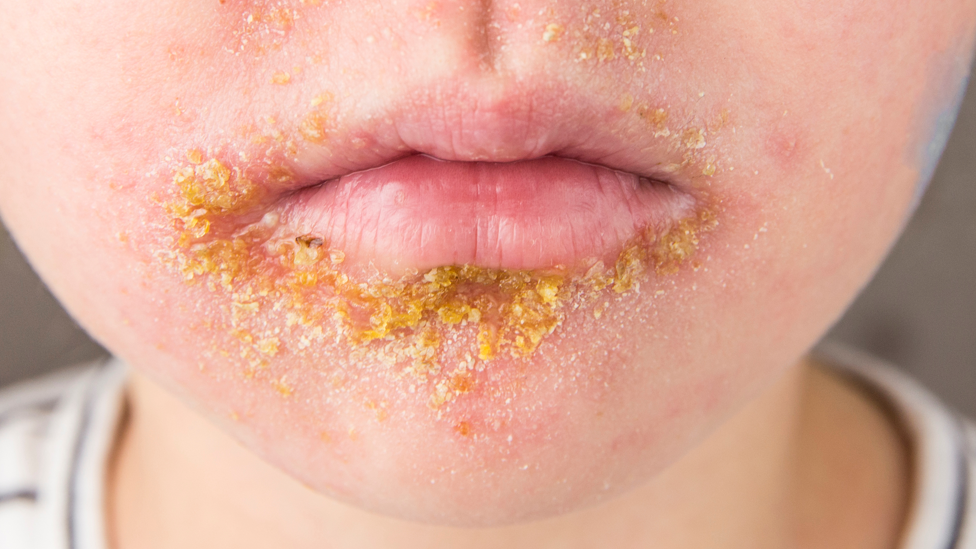
This contagious bacteria usually infects skin that is already damaged, causing red sores and oozing, crusty blisters - often on the face. Although it can look severe, it can be cleared up with antibiotic cream.
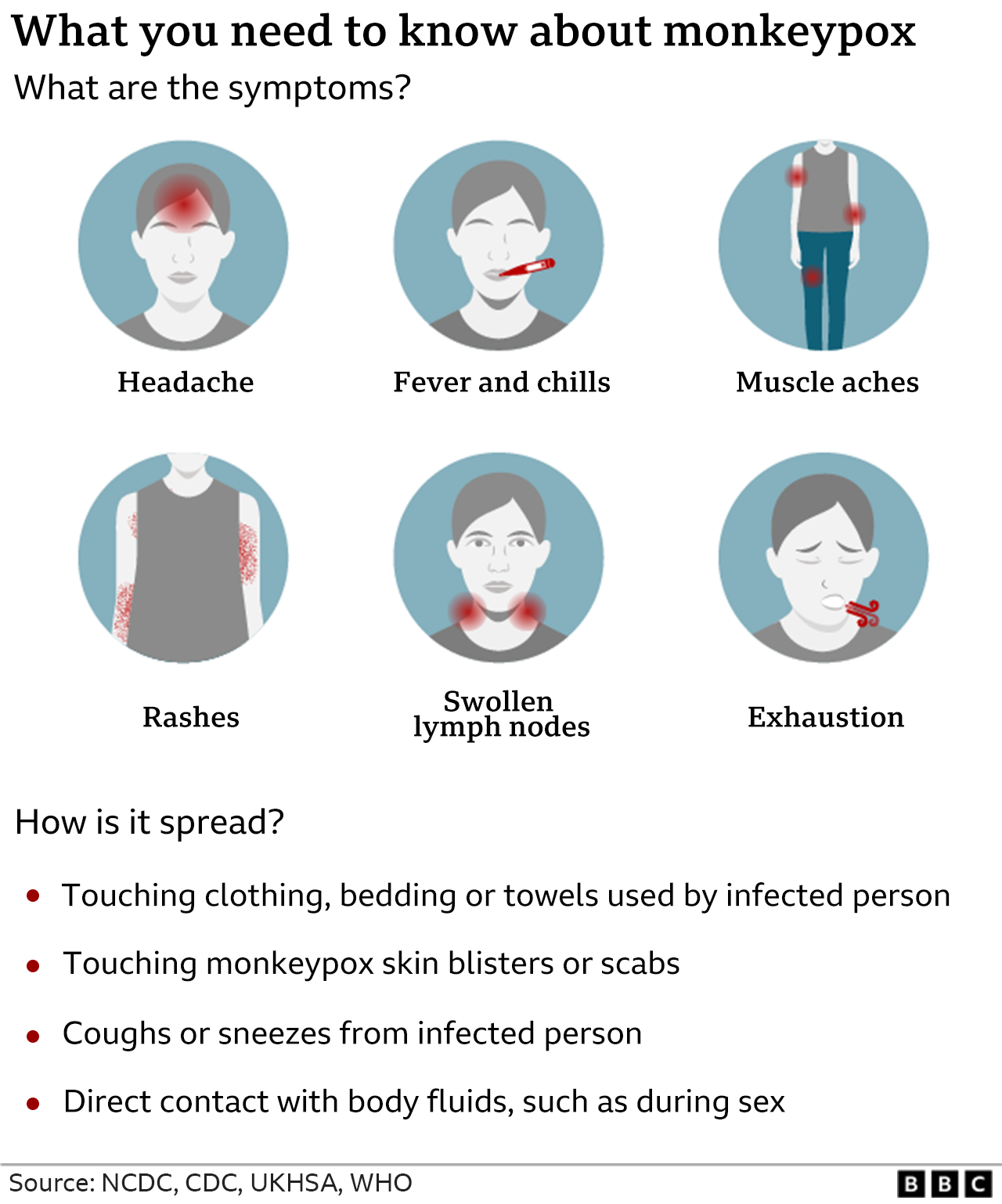
- Published28 May 2022
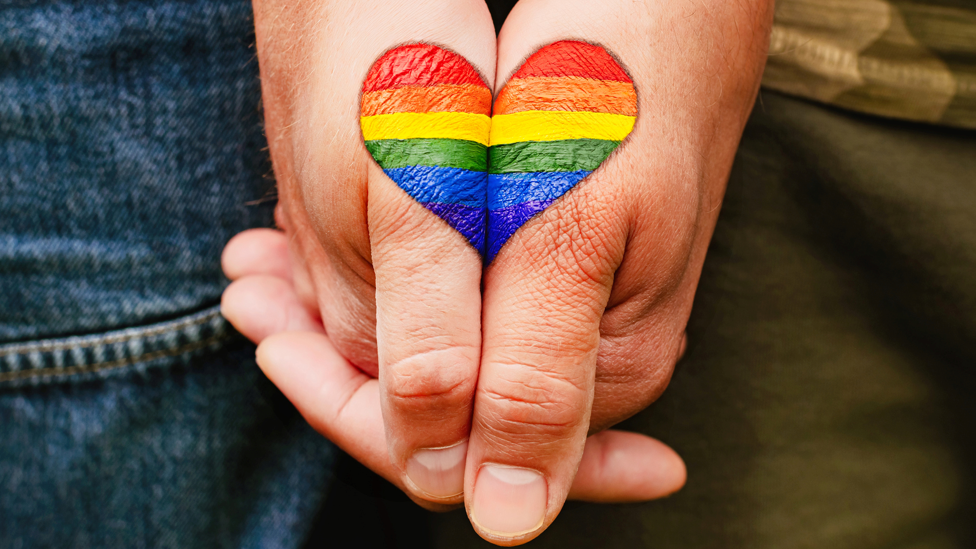
- Published5 August 2022
